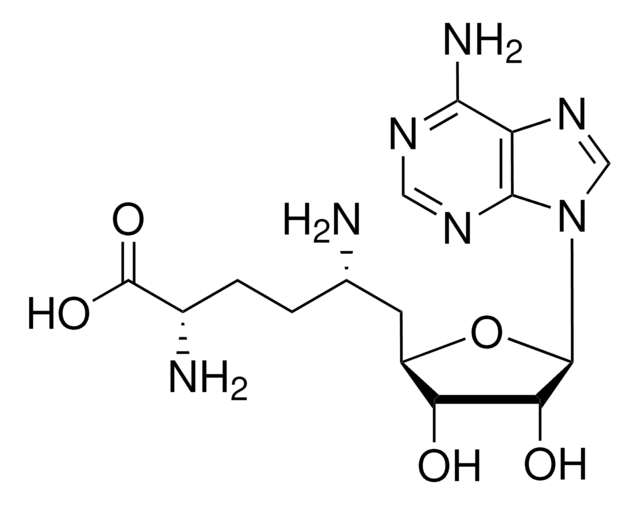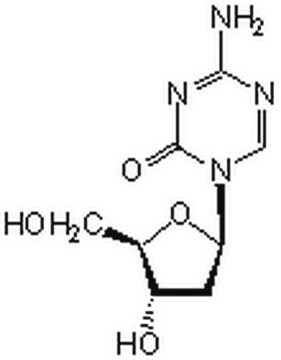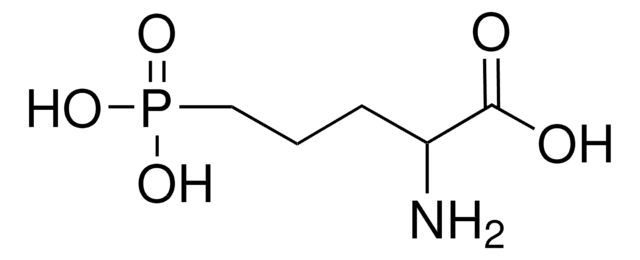R8279
RG108
≥98% (HPLC), powder
Synonym(e):
N-Phthalyl-L-tryptophan
About This Item
Qualitätsniveau
Assay
≥98% (HPLC)
Form
powder
Optische Aktivität
[α]/D -250 to -310°, c = 0.5 in methanol
Farbe
yellow
Löslichkeit
DMSO: >10 mg/mL
Lagertemp.
−20°C
SMILES String
OC(=O)[C@H](Cc1c[nH]c2ccccc12)N3C(=O)C4=CCCC=C4C3=O
InChI
1S/C19H16N2O4/c22-17-13-6-1-2-7-14(13)18(23)21(17)16(19(24)25)9-11-10-20-15-8-4-3-5-12(11)15/h3-8,10,16,20H,1-2,9H2,(H,24,25)/t16-/m0/s1
InChIKey
LMAZUAXDZRILNJ-INIZCTEOSA-N
Allgemeine Beschreibung
Anwendung
- in reprogramming and increasing cell plasticity of primary multipotent mesenchymal stromal cells (MMSC)
- as an inhibitor of DNA methyltransferase (DNMTi) in human retinal pigment epithelial ARPE-19 cells
- as a DNA methyltransferase inhibitor in C33A2 cells to test its effect on papillomavirus late gene expression (HPV16)
Biochem./physiol. Wirkung
Leistungsmerkmale und Vorteile
Lagerklassenschlüssel
11 - Combustible Solids
WGK
WGK 3
Flammpunkt (°F)
Not applicable
Flammpunkt (°C)
Not applicable
Analysenzertifikate (COA)
Suchen Sie nach Analysenzertifikate (COA), indem Sie die Lot-/Chargennummer des Produkts eingeben. Lot- und Chargennummern sind auf dem Produktetikett hinter den Wörtern ‘Lot’ oder ‘Batch’ (Lot oder Charge) zu finden.
Besitzen Sie dieses Produkt bereits?
In der Dokumentenbibliothek finden Sie die Dokumentation zu den Produkten, die Sie kürzlich erworben haben.
Kunden haben sich ebenfalls angesehen
Unser Team von Wissenschaftlern verfügt über Erfahrung in allen Forschungsbereichen einschließlich Life Science, Materialwissenschaften, chemischer Synthese, Chromatographie, Analytik und vielen mehr..
Setzen Sie sich mit dem technischen Dienst in Verbindung.



